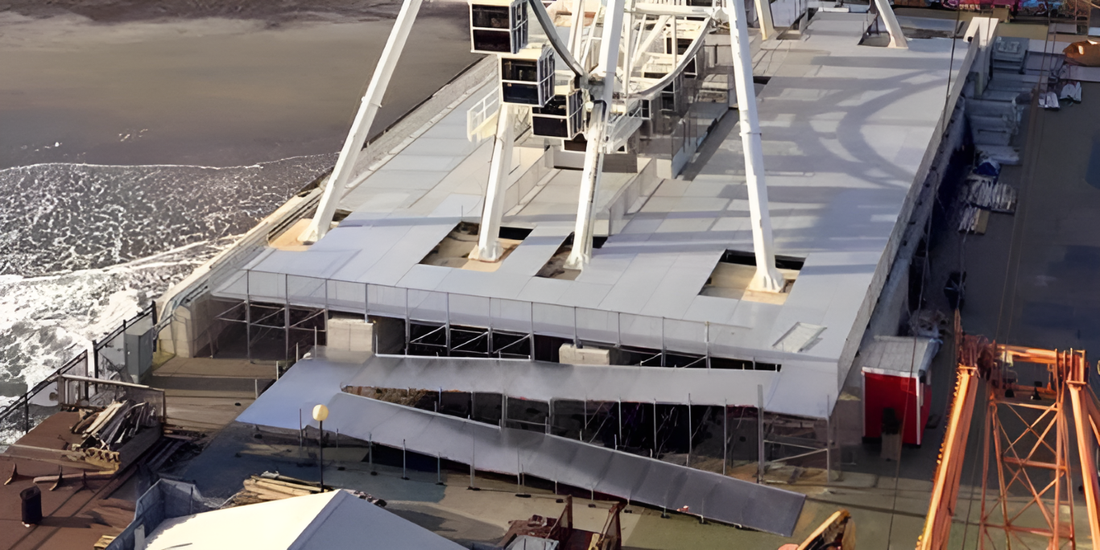Pro Tip:
There’s more to public accessibility solutions than just ramps. There are a variety of scenarios that would require a location to also include platforms. Sometimes they are required in order to meet ADA standards and sometimes the location needs an access solution that has a specific layout/configuration that would benefit from the use of platforms. In this article, we’re going to go over when a location should utilize commercial-grade platforms for accessibility.
How to Utilize Platforms
When to Use Platforms

Top of Ramp:
One use for platforms is to provide an additional surface that eases a ramp user into a decline. If there was an immediate decline outside of the doorway, it would be difficult to maneuver for an individual that uses assistive mobility equipment, or for a caregiver of someone with mobility limitations.
According to ADA guidelines, a level landing at the top and bottom of a ramp system must be at least 60” x 60” in order to adequately accommodate for safe access. So, it’s necessary that there is some sort of level landing that acts as a flat surface to enter onto when exiting a building. If there isn’t an adequate existing landing in place, putting one of our all-aluminum platforms in will quickly solve that.

Every 30 Feet of Ramp:
The ADA considers platforms a resting area and has determined that one is necessary after every 30’ of ramping. This resting area is essential for individuals who use a manual wheelchair, especially on a ramp system that is significantly long.
If there are intermediate platforms between ramp runs, they need to be as wide as the widest part of the ramp that they connect to. Platforms in the middle of the ramp run also need to be at least 60” long.

Change of Direction:
If the ramp wraps around a building or “zig-zags” in order to reach a higher landing, platforms are required for the change of direction. This is not an ADA regulation, but a physical need in order to connect the ramp runs together. However, the ADA does state that a platform used to change directions on a ramp needs to be at least 60” by 60”.

Uneven Terrain:
In order to provide access for individuals of all abilities, a surface must be flat and clear of obstacles. Many locations that require several platforms to create a safe, even surface are outside. This often requires platforms that are capable of custom configuration.
For example, we were able to build a massive platform for a Ferris wheel project by connecting several platforms together and configuring them around the support structure for the Ferris wheel. Another example is when we collaborated with Kelleys Island State Park to create an accessible outdoor experience for visitors.
If you have any questions about platforms or platform sizes...
Please connect with our Customer Service Team! We're happy to find the best commercial-grade solution for your project.
Already know what you want?
To learn more about ADA standards, check out the guidelines listed on their website.

